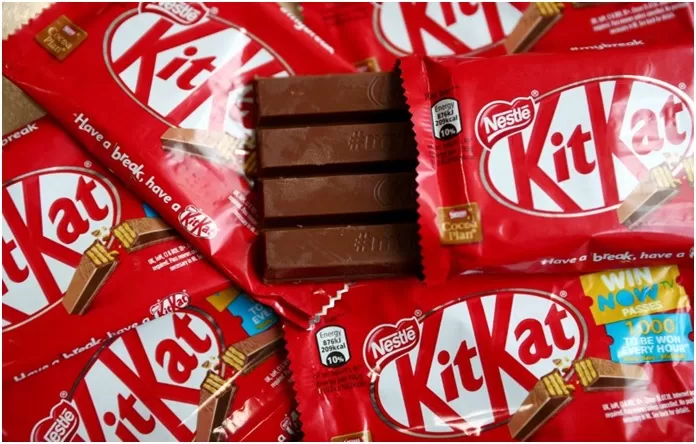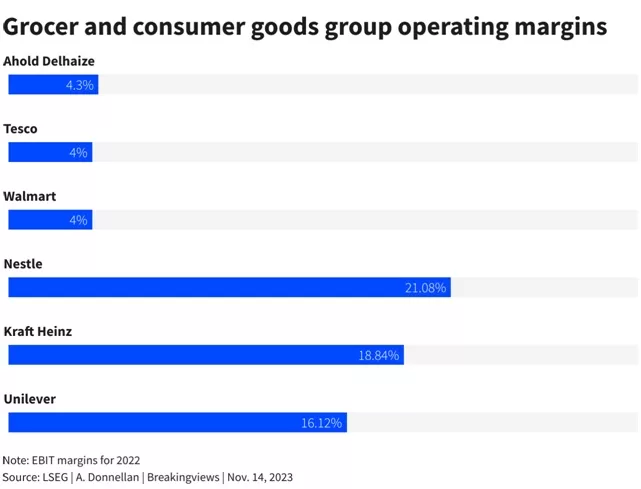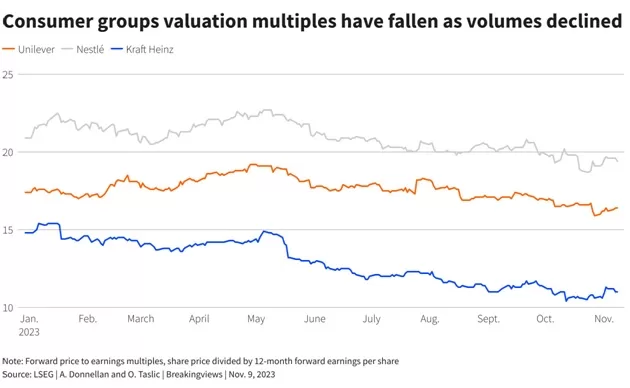Business
Decoding the Crucial Crossroads: Challenges Confronting Corporate Titans in the Realm of Branding

Highlights
- Consumer goods giants, including Nestlé and Kraft Heinz, are witnessing a decline in sales volumes for the first time in the 21st century.
- Traditional brand success based on quality and reasonable prices is challenged as consumers shift to improved store-brand alternatives.
- Supply chain challenges during the pandemic led to price hikes and “shrinkflation,” reducing product sizes while maintaining prices.
- The price gap between branded products and store brands has significantly widened, prompting consumers to scrutinize costs.
- Major manufacturers, including Nestlé and Kraft Heinz, report declines in sold quantities, signalling a broader industry trend.
- Nestlé attributes the decline to global trends such as a preference for less packaged food and healthier choices.
- Global data contradicts claims of declining consumption, projecting stability or increases in key ingredients.
- Emphasis on pricier brands makes manufacturers vulnerable as sales of store-brand products rise.
- The industry faces challenges from obesity drugs impacting snacks and increased waste awareness reducing demand.
- Despite increased advertising spending, companies like Kraft Heinz still lose market share to competitors with higher budgets.
- Investor awareness of risks has led to a decline in consumer goods groups’ valuations since January.
- Companies face the dilemma of maintaining market share by cutting prices or accepting falling revenues if store brands gain more market share.
- Potential solutions for companies include consolidation, splitting units, acquiring premium brands, or expanding into Asian markets.
- While easing inflation could provide relief, the industry must navigate carefully to regain consumer trust and adapt to evolving preferences.
- Consumer Goods Giants Face a Turning Point in Branding
Nestle, Kraft Heinz, Unilever and Danone are facing an unprecedented branding challenge as sales volumes begin to decrease for the first time since 2001. This change reflects changing consumer tastes as well as challenges associated with pandemic influenza that have altered the brand loyalty of such brands as Coca-Cola and Hellmann’s.
Traditionally, successful brands were built upon providing superior products at reasonable price differentials relative to store brands. But now the landscape has shifted as consumers, due to rising global prices, are turning away from brand products in favour of improved grocer-owned alternatives; price gaps between the branded and store brands have also widened significantly.

Branding Giants at a Critical Juncture | Facing Challenges
For the first time in decades, sales volumes at major consumer goods manufacturers have experienced a decrease. Kraft Heinz reported an almost 6% year-on-year decrease in sold items while Danone experienced volume losses in four out of five geographic markets and Unilever noted nearly 7% less volume sales of ice cream during this same time frame.
Nestle attributes the declines to an international trend where consumers opt for less packaged food, dining out more, and opting for healthier options that could result in smaller portions. Yet global data contradicts this claim with projections showing stability or an increase in consumption of key ingredients like wheat, milk and rice by 2023.
Consumer goods companies responded to pandemic-era supply chain challenges by raising prices and engaging in “shrinkflation”, or shrinking product sizes while keeping prices stable, to offset rising raw material, energy bills, and wage costs. Companies such as Nestle, Kraft Heinz, and Unilever anticipate flat or modest sales increases for 2023 while signalling an end to any additional price increases.

Branding Giants at a Critical Juncture | Facing Challenges
Paradoxically, manufacturers’ preference for more costly brands has made them more vulnerable, with sales of generic or store-brand products increasing by 8.0% in the first half of 2023. Now accounting for 38% of Europe’s consumer goods market.
Potential aggravating factors could include obesity drugs and increasing waste awareness, which may further lower demand. Australia and Norway may see efforts to decrease food waste decrease their demand while weight management drugs like Novo Nordisk’s Wegovy may influence global snacks sales.
Consumer goods companies are responding to these challenges with increased marketing spending. Nestle has proposed allocating around 8% of sales during the second half of the year towards brand promotion; however, this approach may not work; Kraft Heinz recently lost market share due to competitors with higher marketing budgets.

Investors have become more cognizant of risks posed by consumer goods companies, leading them to value these groups less highly since January. Companies facing the dilemma of maintaining market share by cutting prices (at the cost of margins or declining revenues) or accepting declining revenues may consider consolidation, splitting business units or purchasing premium brands or expanding into Asian markets as potential solutions.
Though inflation could bring some relief, the consumer goods industry must navigate carefully in order to regain consumer trust and meet evolving consumer preferences.

















































